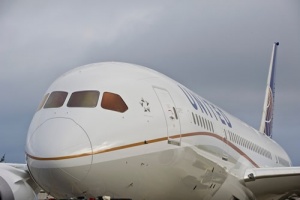United Airlines’ results buoy aviation sector

United Airlines, the largest carrier in the world, has reported third-quarter 2014 net income of $1.1 billion, or $2.75 per diluted share, excluding $151 million of special items.
This is the highest-ever quarterly profit and an increase of 99 per cent year-over-year.
Including special items, UAL reported third-quarter 2014 net income of $924 million, or $2.37 per diluted share.
United’s consolidated passenger revenue per available seat mile increased 3.9 per cent in the third quarter of 2014 compared to the third quarter of 2013.
“Our third-quarter results demonstrate continued progress, and I want to thank our employees for their contributions to our success,” said Jeff Smisek, chairman, president and chief executive officer of United.
ADVERTISEMENT
“We still have significant opportunity ahead to grow our margins and improve the quality and efficiency of everything we do.”
UAL ended the third quarter with $6.9 billion in unrestricted liquidity.
United returned $220 million to shareholders as part of its previously announced $1 billion share buyback program.
For the third quarter of 2014, total revenue was $10.6 billion, an increase of 3.3 per cent year-over-year.
Third-quarter consolidated passenger revenue increased 4.4 per cent to $9.3 billion, compared to the same period in 2013.
Ancillary revenue per passenger in the third quarter increased 10.9 per cent year-over-year to more than $22 per passenger.
Third-quarter cargo revenue grew 19.1 per cent to $237 million driven by higher volumes year-over-year, as cargo traffic returned following lower bookings during the implementation of the company’s new cargo systems in the third quarter of 2013.
“We are seeing good results from our revenue initiatives, and over the next several quarters, we expect to build on our early momentum,” said Jim Compton, United vice chairman and chief revenue officer.
“Our team continues to pursue and implement changes that will enhance revenue performance.”
Other revenue decreased 8.9 per cent year-over-year to $1.0 billion mostly due to the company choosing to discontinue an agreement to sell fuel to a third party.
The corresponding expense decline appears in third-party business expense.

